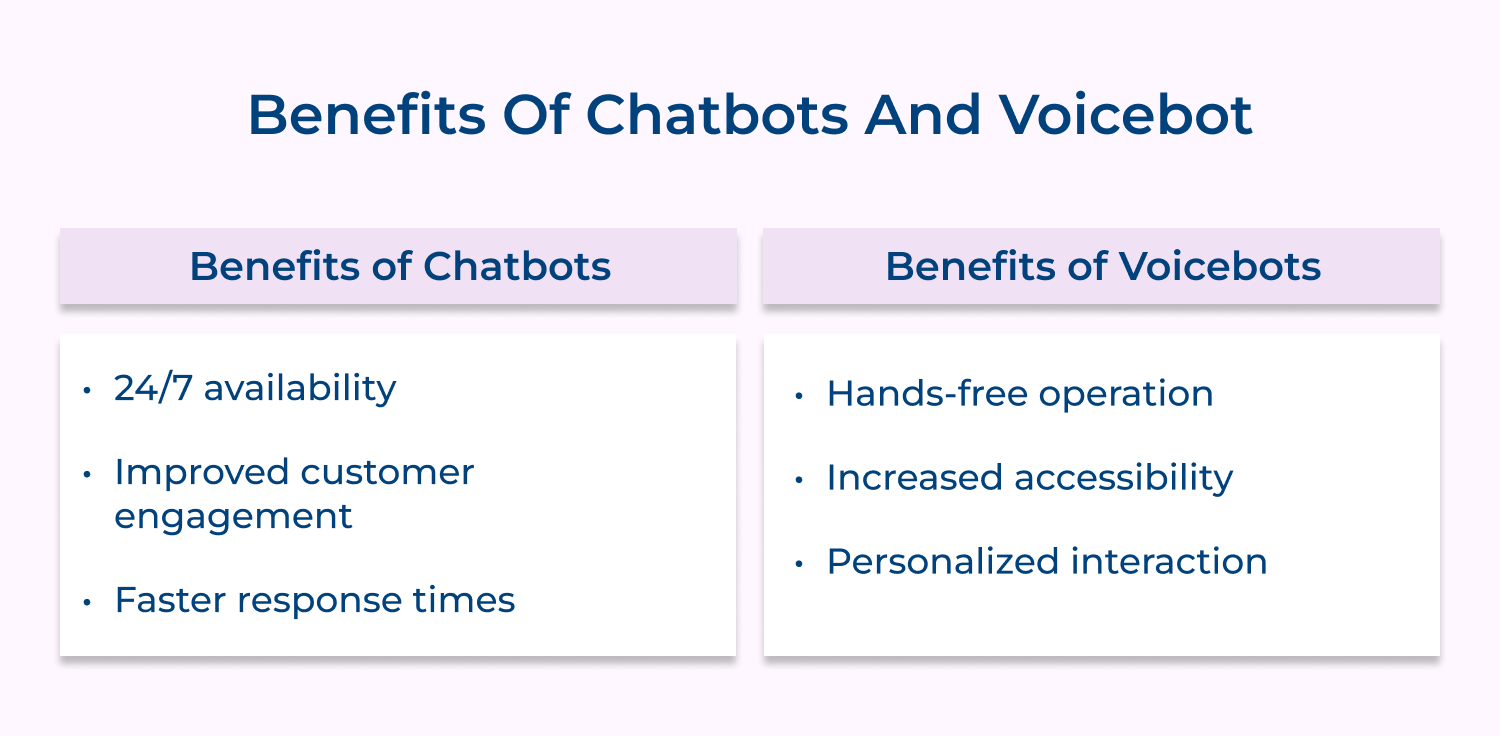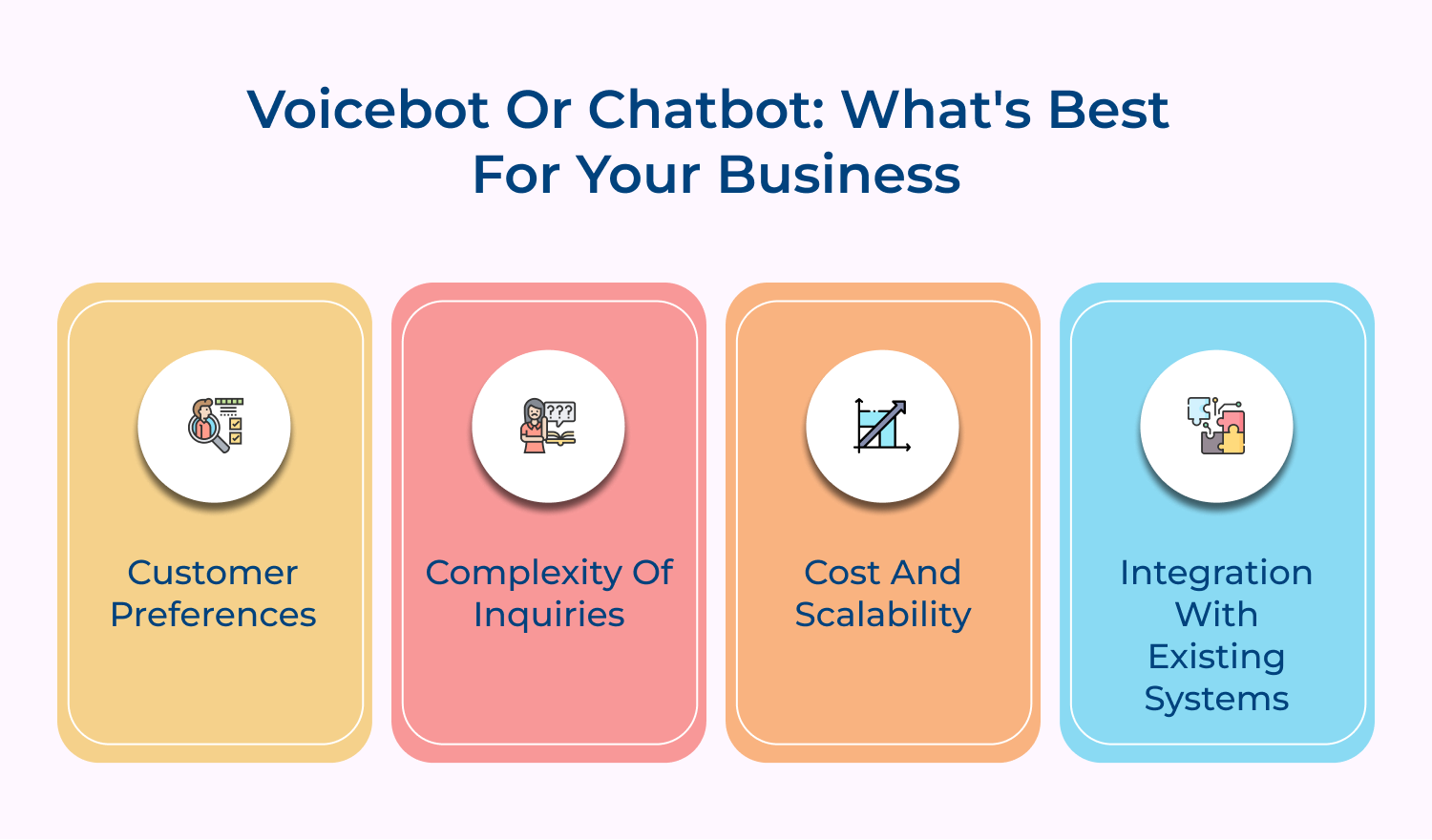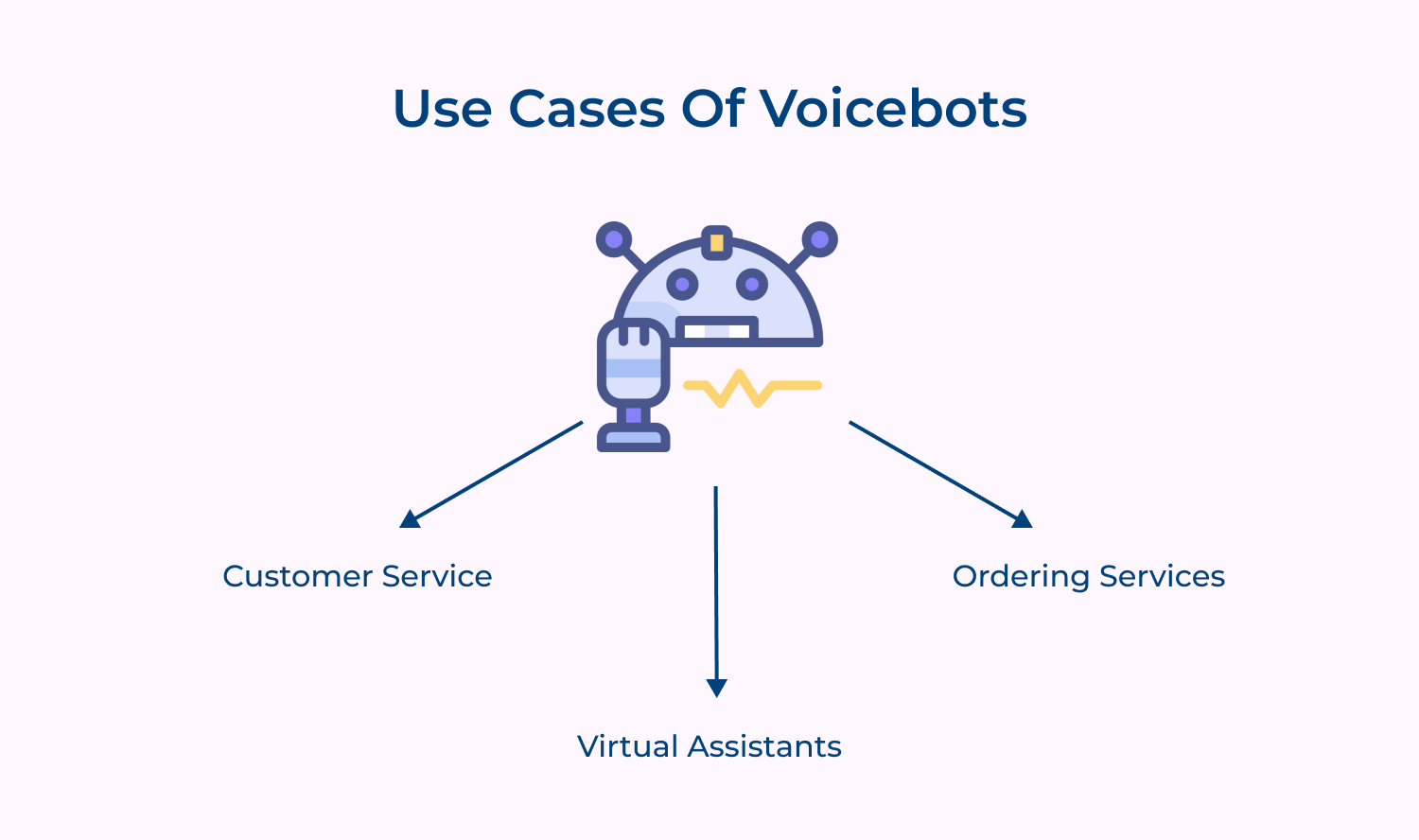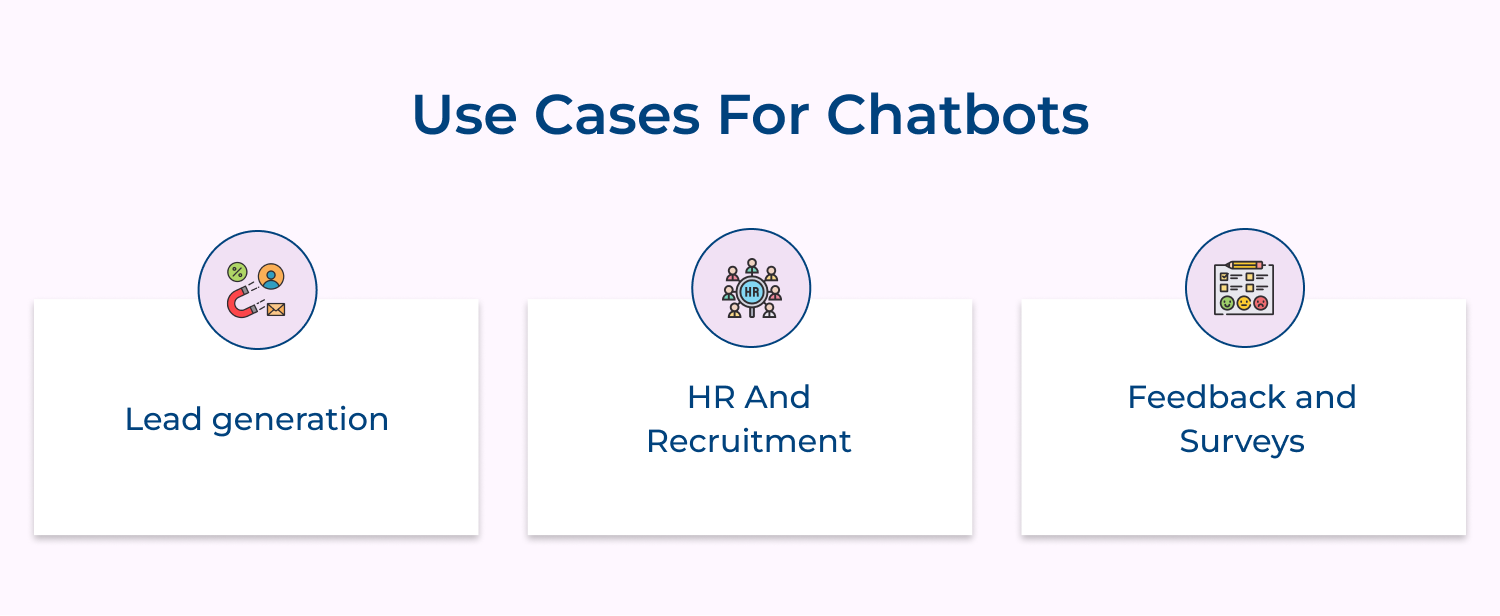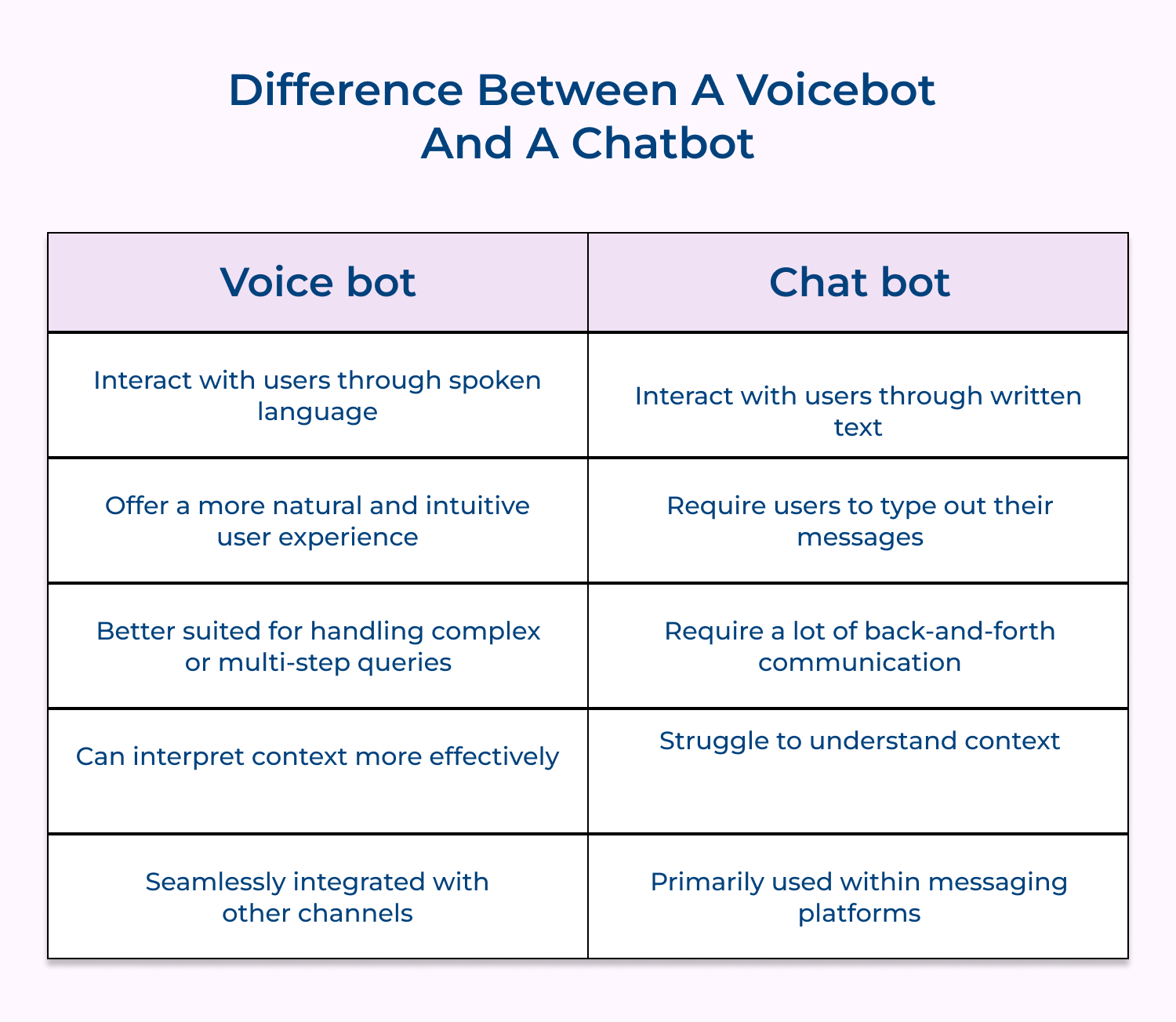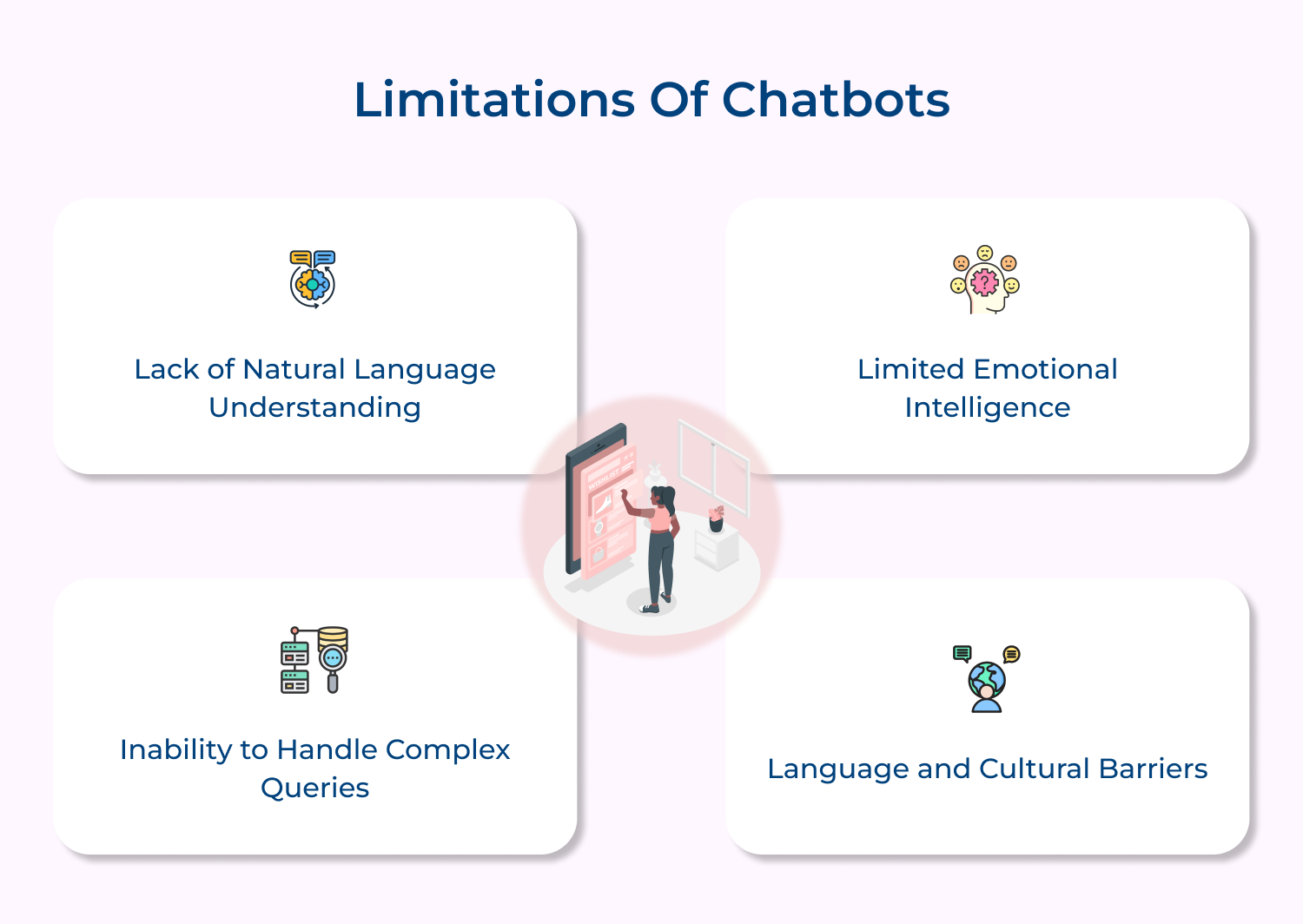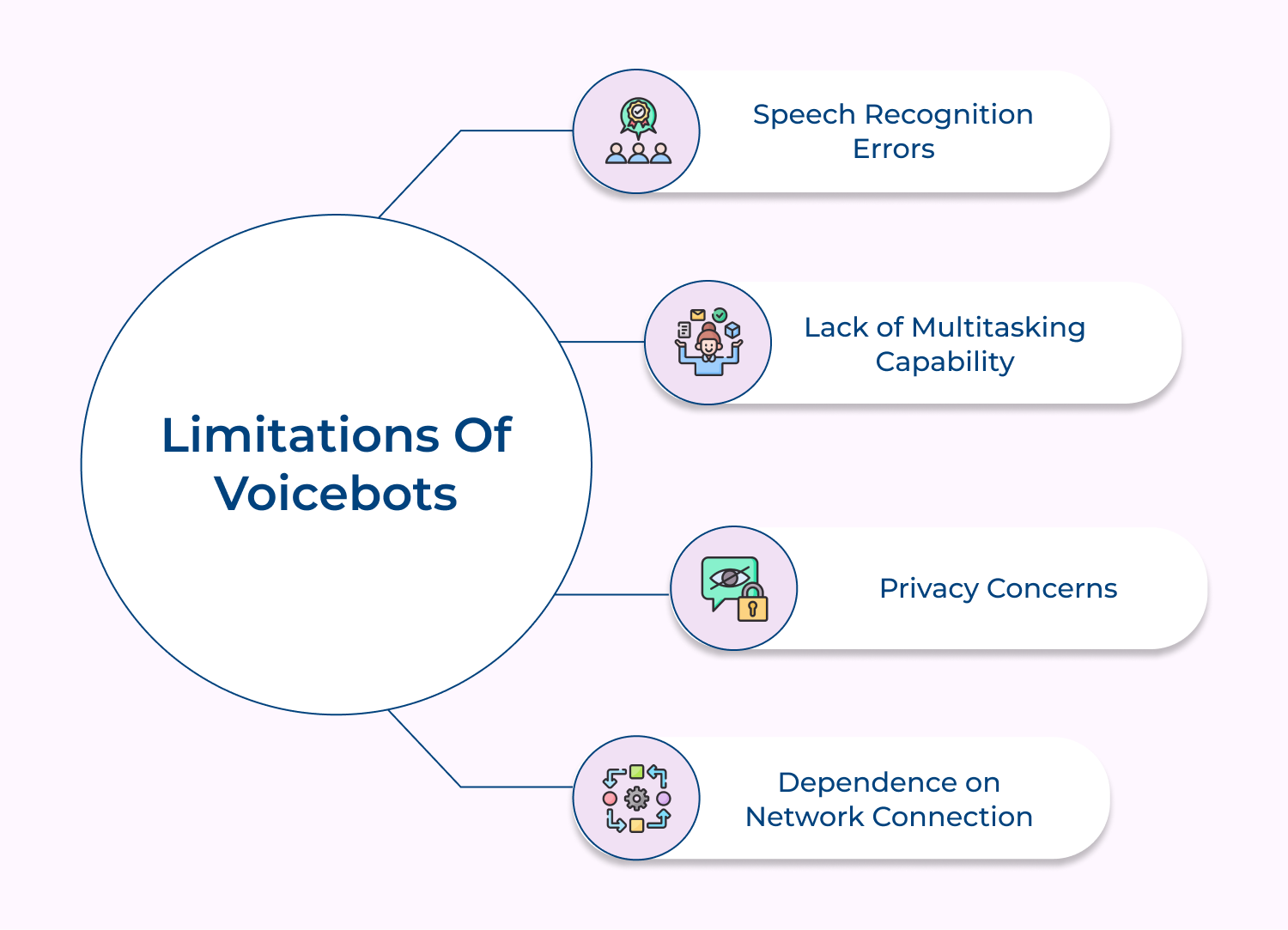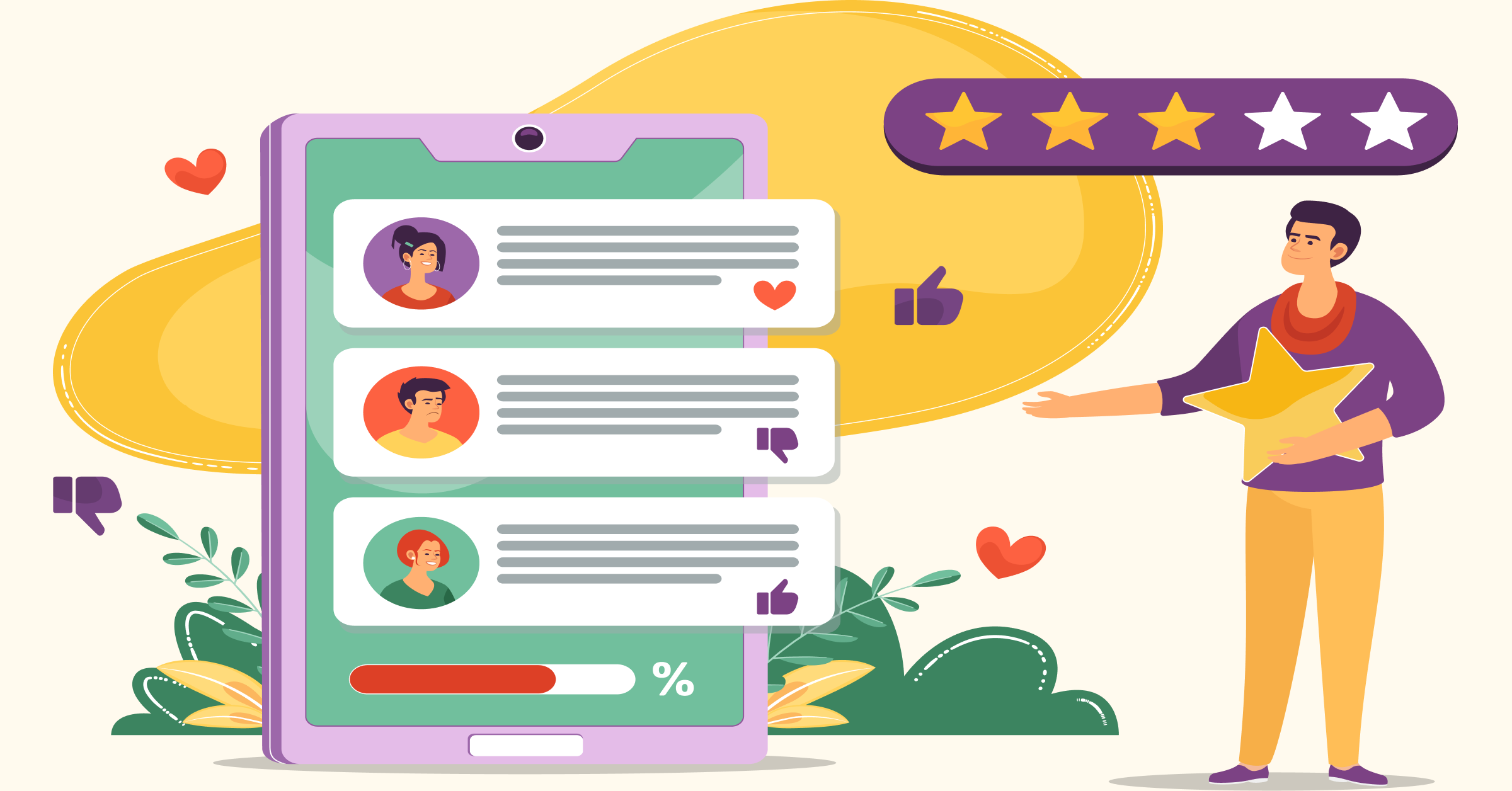1. Interaction Method
The most obvious difference between a voice bot and a chatbot is the method of interaction. Voice bots interact with users through human speech, typically through a virtual assistant like Siri or Alexa. Chatbots initiate user interaction through texts, Observe messaging platforms like Facebook Messenger or Slack.
2. User Experience
Voice bots offer a more intuitive user experience, as users can simply speak their queries or commands, similar to how they would communicate with another person. Chatbots need users to type out their messages, which can be less convenient and may lead to more errors in communication.
3. Complexity of Queries
Chatbots sometimes may struggle to handle complex queries that require a lot of back-and-forth communication, as typing out detailed responses can be cumbersome. Voice bots are typically better suited for handling multi-step queries but one must also accept that there is room for error as the voice bot may repeatedly give different answers to the same query.
4. Contextual Understanding
There’s a greater chance that chatbots may struggle to understand context and may end up providing generic responses. Voice bots have the ability to interpret context more effectively than chatbots, as they can pick up on tone of voice, intonation and other vocal cues. This allows voice bots to provide more personalized and relevant responses to user queries.
5. Integration with Other Channels
Voice bots can be seamlessly integrated with other channels, such as phone systems or smart home devices, to provide a consistent user experience across different platforms. Chatbots are primarily used within messaging platforms and may not be as easily integrated with other channels.
Limitations for Chatbots and Voicebots
Chatbots as well as voicebots have become increasingly popular in recent years. But, like any technology, chatbots and voicebots come with their own set of limitations.
Limitations of Chatbots

